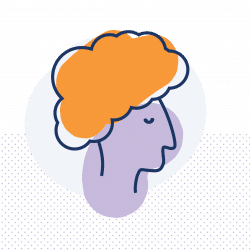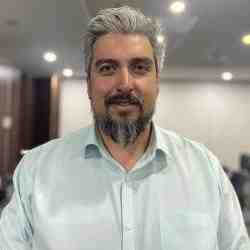Introduction
Architecture and city design affect so much of community life. Vera is introducing a new education practice to encourage and equip young people to take part in designing their environment and become responsible adults who are engaged citizens in their communities.
The New Idea
Vera Marin, an accomplished urbanist architect and lecturer, is spearheading an innovative approach that repurposes schools into a space of civic education practice centered around architecture and the principles of built environment education. The term ‘built environment’ refers to the human-made surroundings that provide the setting for human activity. Vera aims to use education in this space to create more understanding on the processes, roles, and relationships that transform the city. Through her new methodology at De-a Arhitectura, children and young people are better equipped to be the changemakers of tomorrow, putting more empathy into their surroundings and learning about them. She created a unique relationship between teachers and built environment professionals, leveraging architecture to deliver a learning experience that brings children closer to how communities are being built and transformed, but most importantly, nurtured and protected.
De-a Arhitectura offers the only accredited course in the educational curriculum that builds a strong relationship between classroom teachers and experts to deliver a multidisciplinary, practical, and immensely fun approach to understanding architecture, cities, and one’s role as involved citizens. Her venture’s primary objective is to impress upon children the pivotal importance of civic participation, community involvement, sustainability, and the need for collective efforts to achieve mutual benefits. De-a Arhitectura leverages the power of a community of built environment professionals such as architects to challenge the current learning path of children, to one that shapes the caring, driven, and empathetic citizens of tomorrow. Recognizing the insufficiencies that exist in the foundational education of architects, which often lacks emphasis on community involvement and ethical consideration, Vera creates a new role for them, an opportunity to practice their profession differently, as educators and facilitators of participatory processes, planting that seed of creativity and curiosity in the new generation.
Since its inception in 2013, the program “De-a Arhitectura in My City” has positively influenced over 30,000 children and young people across Romania, collaborating with more than 1150 teachers and 1000+ volunteer architects, a significant portion of Romania’s registered architects. The venture quickly received the financial support of the National Order of Architects, who deemed it a national priority. While there are many other organisations entering the school space to teach civic participation in a direct service manner, De-a Arhitectura’s uniqueness comes from its engagement that goes beyond the impact on children. De-a Arhitectura aims to consolidate a civically engaged future generation, but it also measures the impact such experiences have on the adults that are part of the process – the architects. As a result of giving architects a space to do something different, it challenges their day-to-day approaches in working with adults.
De-a Arhitectura started with a learning experience dedicated to 3rd and 4th graders (9-11 years old), because studies pointed to this age as one where children not only are curious, but also start to develop strong feelings of righteousness and practice empathy, which made it the most appropriate age to consolidate them. However, the potential for scaling was immediately apparent, both in terms of reach and age groups. De-a Arhitectura quickly spread both to other cities, especially those with an architecture university, and across age groups, to 6-8 years old, but also high school student, university students, and school staff. Their model and learning methodology influenced other organisations in Romania focused on education to pick up similar principles towards civic engagement, such as Eematico or Corabia de Arhitectura. From theory to practice, Vera pushes schools to adopt participatory design in their decision making, starting with having children (most important stakeholders and users of school facilities) at the centre of decisions when redefining the space of the schools.
The Problem
The traditional education system, not just in Romania but in many parts of the world, has been criticized for its focus on rote learning and standardized testing, at the expense of skills such as creativity, critical thinking, and changemaking. Multiple attempts at reform have failed, resulting in an outdated curriculum that fosters repetition and competition. This is a systemic issue that has significant consequences for individuals and society. Romania is still lagging even with regards to the most basic and essential life skills, with staggering low levels of functional literacy, amongst the lowest in Europe as well as a concerning voter turnout among young people. A study from 2021 showed that 66.1% of young people felt that getting an education in Romania does not prepare you for real life, while a shocking 40% considered leaving the country for high school or university. Even with the new global realities of climate change, almost 70% of university students reported never receiving climate education or skills on sustainability. The consequences for such an aged and almost hated education system are that it creates new generations of individualistic, uninformed, and civically unengaged citizens who make selfish choices and disregard the environment outside of what they own. This individuality inhibits the changemaker spirit, because of a lack of empathy towards their surroundings. The current education system has few mechanisms for nurturing empathy within its current structure.
When children become adults, they enter an imperfect world still governed by corruption, power, and self-interest. The dynamics between most powerful stakeholders (politicians, real estate corporations, public authorities, etc.) hinder the shared voice of the citizens, which further deepens the low civic engagement and general hopelessness. Citizens do not believe that change is worthwhile and are not equipped with the right mindset and tools to take action. The fact that citizens do not feel empowered to say what they need, be it bike lanes or community spaces, allows “whoever has the money to do whatever they want, with no consequences”.
There is one profession that can have a lot to say about how our surroundings are built, transformed, and nurtured – the architect, a built environment professional, present in all processes around us. Yet subjects related to architecture, for example, are only accessible in university or vocational high schools, which are significantly outnumbered by traditional schools. Market pressures, lack of diversified education and ethical training experience in university, paired with limited bargaining power in their daily activities also contributed to a loss of action, a powerlessness of architects to act for a greater good of the community. Instead of becoming potential stewards of the built environment, following the money is seen as more accessible. This creates a broken perception and ineffective relationship between architects and the rest of society. For many, the architect is still associated with the communist memory of forced planning and systematisation or considered a luxury, which positions the architect in a negative light, as an intermediary with power rather than a creator of homes, a protector of the common city environment. Some architects are content with this lucrative position, but these out of sync views show that the profession of architect has not yet found its natural place in the Romanian society, a place that goes beyond the financial aspect of the job. As a result, city infrastructure in Romania is often built unsustainably and haphazardly without regard to the impact on the broader community.
The Strategy
Vera, at the helm of De-a Arhitectura, passionately believes in the transformative power of engaging, value-centric education to nurture civic responsibility. She's convinced that the foundation for demanding better cities lies in cultivating an early love for one's surroundings, community, and the broader urban landscape. This vision is further enriched when professionals from the built environment, including architects, urban planners, and designers, actively contribute to educational endeavors.
Central to De-a Arhitectura's approach is the innovative educational program "De-a Arhitectura in my City", meticulously designed to build reinforcing competences: values, knowledge and tangible skills. This initiative not only sparks students' creativity but also heightens their awareness of their urban surroundings. It provides a fresh learning avenue by integrating built environment education into schools, primarily targeting 3rd and 4th graders (9-10 years old). Teachers are equipped with a comprehensive set of resources, from curriculum guides to visual aids, all designed to facilitate the experimental learning method of observation, analysis, building, and presentation. To ensure the program's success, teachers receive dedicated training, and each class benefits from the expertise of a volunteer architect. This collaborative effort culminates in a hands-on project where students collectively design their dream cities, emphasizing the essence of teamwork and negotiation in urban planning. A volunteer architect is assigned to each class to support with the city expeditions, experiments, and game and visual presentations that are part of the program, including the joint project. During the learning experience, children learn about principles of design and architecture, as well as practices of sustainability. They also gain a better understanding of processes and the relationship between decision makers and citizens through playful exercises. This is what makes the initiative unique – it is the only accredited course in the curriculum that presents such a constant additional human resource for teachers and amongst the few that correlate many subjects that are normally treated individually, such as history, geography, sociology, civic education, technological education, or even French and English.
Beyond the classroom, Vera envisions a society where shared interests bind communities. She recognizes that merely shaping children's perspectives isn't enough; there's a need to reshape the entire school ecosystem. The "My School can be Cool" initiative embodies this vision. By applying participatory design principles, it seeks to revamp school spaces, from libraries to green areas, all rooted in students' needs. The entire process, from identifying needs to implementation, is collaborative, with students actively participating and architects guiding them. The outcomes of these projects are showcased on the "ȘCOALA MEA" platform, serving as a repository of ideas and experiences for a broader audience.
As De-a Arhitectura's influence grows, the organization is keen on forging new partnerships and refining their model to cater to diverse age groups. They've realized that while "De-a Arhitectura in my City" has been a resounding success, its framework might not suit all youth demographics. This understanding has led to the birth of programs like "De-a Arhitectura Mini" for younger children, blending storytelling with built environment education. For older students, the "Urban Up" initiative offers interactions with professionals, sparking discussions on urban transformation, heritage, and city accessibility. Over 1,000 high school and university students from 7 cities participated in workshops on multi-disciplinarian scenarios created by university students on urban planning, and while the initiative is newer, there is a community of practice forming beyond the teaching format of previous programs. The initial feedback shows that this spin-off covers the gap young people ask for in terms of designated community spaces for the life in the city. Vera and De-a Arhitectura now work with all architecture universities in Romania, which she views as a pathway for her to create a generation of future architects that will be interested in such contributions to society.
De-a Arhitectura has left an indelible mark on over 30,000 students, collaborating closely with a vast network of 1150 teachers and 1000+ architects. They have built a strong foundation of teachers that engage their classrooms in this learning experience every year. Their efforts are gradually reshaping perceptions, with significant endorsements from architectural bodies such as the National Order of Architects, which now regularly refers architects to the educational program, and growing municipal interest to finance My School can be Cool, such as Municipality of Reșița, which is now in their second year of partnership. There are more municipalities now interested in taking up participatory design to reshape schools, two of which begin implementation next year. Indirectly, through the excitement of children, parents get in turn interested in built environment education and seek for children to continue learning civic participation – they become part of De-a Arhitectura Club, a peer-to-peer learning space.
The organisation gained international recognition from the International Union of Architects’ working group on Architecture & Children, for the strong bond they created between architects and the educational system and the uniqueness of the learning path for children. Hundreds of testimonials from architects show they feel more empowered to embed this experience into their daily work and shift their relationships with their clients and the way they engage in their own communities, as citizens first. Architects see the value in the educational programs, are active in promoting the program and seeking collaborations with more schools, and are very open to learn new methodologies on participatory designs.This is also apparent in the fact that De-a Arhitectura expanded to 10 other regions at the request of architects that wanted to localize the impact of the organisation even further. Even teachers have become members of the organisation, which rarely happens in the NGO sector. Compared to 10 years ago, there is a visible shift of perception towards architects, confirmed by the Order of Architects and felt by the community, who are beginning to see architects as “the good guys” - rather than being someone you need to pay to get permits, they are now viewed as someone who has valuable knowledge and is needed in the community. The fast and impressive growth of De-a Arhitectura happened as teachers immediately saw tangible changes of behavior in their pupils, whose curiosity and desire for engagement stay with them even after the course is finished. Now, Vera is inspired by seeing the first architecture students who followed De-a Arhitectura in My City begin to further their passion at universities.
The Person
Vera is an urbanist architect with a vision for a world where all citizens participate in the design and decisions that affect society. She realised she wanted to become an architect while in high school, led by her passion for drawing. In her last year of university, however, she realised urban planning was a more interesting field and complemented her studies at University of Nottingham. She quickly realised the differences between schools, as Romania presented no interest in discussing issues related to citizen behavior as part of architects’ formation. As a previous lecturer at Ion Mincu University in Bucharest, she actively promoted ethical and community-oriented subjects as part of the university’ learning path.
From the beginning she understood that being an urbanist meant a duty to create and protect an environment for all. Prior to founding De-a Arhitectura, she was instrumental in founding Association for Urban Planning (ATU), inspired by French NGO Ville en Transition, with who worked with them for 8 years. In 2001, ATU was the first organisation to give a voice to architects and urbanists and promote an integrated and sustainable approach to urban development. It was a key partner for United National Development Programme (UNDP) Today, ATU is a think tank invested in research and recommendations on public policies, having been involved in over 100 projects that brought a multi-stakeholder, collaborative approach, which was quite innovative for 2001.
Working with adults is a difficult task, met with barriers of perceptions and mentalities and a slow approach to change. Vera saw a lot of potential in the upcoming generation, with a cleaner slate when it comes to biases and more approachability, imagination and curiosity. Vera put the building blocks together from her experience with ATU to understand what it takes to build the responsible adults of tomorrow, equipped to ease the complex issues of urban planning that is currently met with so much resistance.




